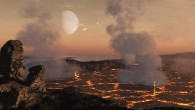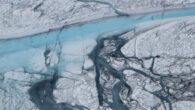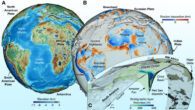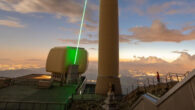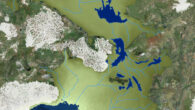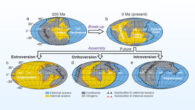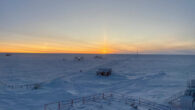Earth’s rotational pole has drifted toward 64.16°E at a speed of 4.36 cm per year during 1993-2010 due to groundwater depletion and resulting sea level rise, according to new research. Seo et al. show that the model estimate of water redistribution from aquifers to the oceans would result in a drift of Earth’s rotational pole, about 78.48 cm toward 64.16°E. Image credit: NOAA. Melting of polar ice sheets and mountain glaciers has been understood...



